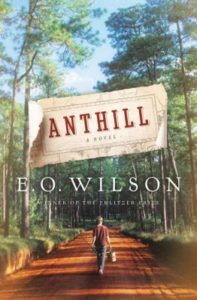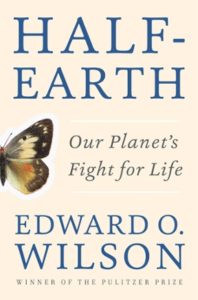As a part of our commitment to education, the South Carolina Native Plant Society maintains a list of recommended books which are packed with useful and interesting information.
BOOK REVIEWS:
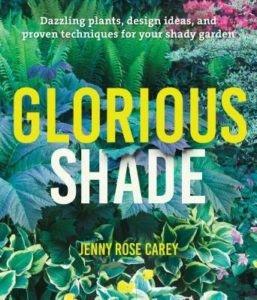 Glorious Shade (2017) by Jenny Rose Carey
Glorious Shade (2017) by Jenny Rose Carey
The grass is always greener…. unless it’s under an oak tree! Jenny Rose Carey, encourages gardeners to embrace their shade as a gift. In this 300-odd page treasure Carey guides you to meeting the challenge of ‘right plant right place’ by recognizing the unique characteristics in your space, through the various soil types, shade levels and seasons of the year. This valuable and easy reading reference provides excellent design approaches and includes dozens of our own favorite native plants grouped into trees, shrubs, vines, ferns, perennials and even tropical. One of the best features of the book are the plant lists, including plant recommendations for shade based on native plants, fragrant plants, various soil types, planting under tree canopies, seasonal interest, and deer resistant shade plants among others. This is a wonderful book and highly recommended and it’s inexpensive and available through the Upstate library systems. Doug Lockard Aug 2022
Dr. E.O.Wilson: Thinker, Visionary, and Author
Anthill: A Novel (Fiction 2010)
Winner of the 2010 Heartland Prize, Anthill follows the thrilling adventures of a modern-day Huck Finn, enthralled with the “strange, beautiful, and elegant” world of his native Nokobee County. But as developers begin to threaten the endangered marshlands around which he lives, the book’s hero decides to take decisive action. Edward O. Wilson―the world’s greatest living biologist―elegantly balances glimpses of science with the gripping saga of a boy determined to save the world from its most savage ecological predator: man himself.
Half Earth Book Review: Half-Earth (2016) by E.O. Wilson
“We should forever bear in mind that the beautiful world our species inherited took the biosphere 3.8 billion years to build. The intricacy of its species work together to create a sustainable balance we have only recently begun to grasp. Like it or not, and prepared or not, we are the mind and stewards of the living world. Our own ultimate future depends upon that understanding. We have come a very long way through the barbaric period in which we still live, and now I believe we’ve learned enough to adopt a transcendent moral precept concerning the rest of life. It is simple and easy to say: `Do not further harm to the biosphere.’” E.O.Wilson
In his final and perhaps most compelling work, this Pulitzer prize winning author and preeminent evolutionary biologist explains that biodiversity isn’t just about species; it’s about native species that co-evolved over the millennia and are now unable to evolve quickly enough to survive in today’s ecological environment. And why does that matter? In order to save our declining Biosphere we must learn how the species within it interact with one another. Yet this process has only just begun, and remains a fledgling science, with few answers and many questions.
Wilson is candid and factual about how we arrived at this dilemma and points out that although we humans are the primary cause of biodiversity decline, we also have the ability to find answers and make decisions vital to our long-term existence.
The many contributing factors to biodiversity decline are carefully explained, and although Wilson feels that while today’s conservation efforts are helping, they will prove too fragmented to recover the ecological balance. He recommends setting key areas as biological preserves, including our own Longleaf Pine savannah, which he describes as among the richest and most diverse on the planet.
A highly recommended read! Doug Lockard Feb’22
The Well-Tended Perennial Garden (July 2021)
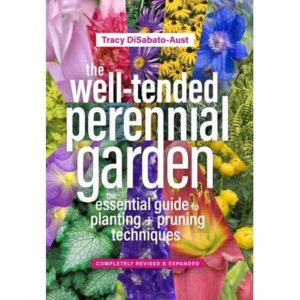 One of the greatest challenges to aspiring new gardeners is learning the life-cycle of the plants, the ‘when, where and how’ of maintaining them. We recently received this recommendation from Amy Henderson, one of our member that’s also a garden designer here in the Upstate.
One of the greatest challenges to aspiring new gardeners is learning the life-cycle of the plants, the ‘when, where and how’ of maintaining them. We recently received this recommendation from Amy Henderson, one of our member that’s also a garden designer here in the Upstate.
“Folks might be interested in a book called “The Well-Tended Perennial Garden” by Tracy DiSabato-Aust. Disclaimer, it’s by a horticulturalist / designer in midwest; she’s mainly working on in-ground gardens, and discusses plants both native and not. Her recommendations are about how to maintain gardens to look good and be healthy… Some of her content is about deadheading, etc, obviously not applicable to gardening for wildlife, however, she describes extremely well how to use pruning / cutting back / thinning to control height, shape, and flowering time. She also discusses useful general concepts (for example, why the amount of delay in flowering is not directly related to the timing of the pruning, but includes other factors). The book includes A-Z listing of plants, including many of our natives, with genus- and species-specific info (some cultivar-specific info).”
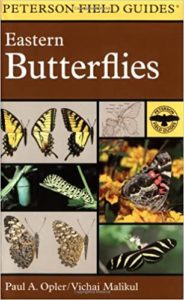 Caterpillars of Eastern North America
Caterpillars of Eastern North America
by David Wagner
An illustrated guide of nearly 700 butterflies and moths found east of the Mississippi. Full-page accounts cover almost 400 species, including up to six images per species plus information on distribution, seasonal activity, behavior, foodplants, and life history. Dozens of new foodplant records are presented and erroneous re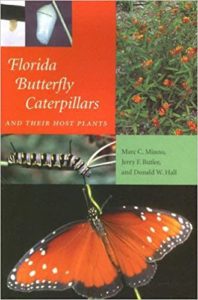 cords are corrected.
cords are corrected.
Florida Butterfly Caterpillars and Their Host Plants
by Marc Minno, Jerry Butler, and Donals Hall
This book will become the classic guide to southern butterfly caterpillars and their host plants. With hundreds of color photographs and concise information in a format that can easily be carried into the field
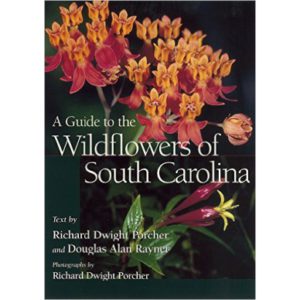 A Guide to the Wildflowers of South Carolina
A Guide to the Wildflowers of South Carolina
If you’re in the market for a resource that helps sort through our incredibly diverse native plants to find those ‘right plants’ for your own ‘Living Landscape’ then this beautiful body of work by Richard Porcher and Douglas Rayner will be of interest. This 551-page full color guide includes extensive descriptions of more than 680 species and is worthy of any botanical scholars’ library. For the rest of us gardeners, 115 pages of those pages and 287 incredibly rich full-color images are dedicated to the plant communities of our own Piedmont & Mountain regions encompassing our own Upstate ecosystem. Not enough to plunk down $35 bucks? Well, there’s another 27 pages of notes on field trips within our 10 county Upstate featuring hikes where you canexperience these plants in their natural settings.
Round About Greenville and the Carolina Blue Ridge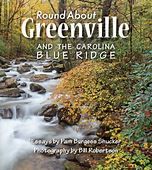
Pam Shucker and Bill Robertson will present our online program in October on their recently published book “Round About Greenville and the Carolina Blue Ridge”. Bill Robertson is a professional nature photographer whose works appear in many businesses of the upstate and quite a few homes as well. Pam’s writing tells of how nature is so healing to the body and uplifting to the spirit. Not only will you enjoy reading through this book, but also you will come back to it many times as a reference and as a refresher.
Pam and Bill are both members of the Upstate Chapter of the SCNPS and also worked with our Upstate board member Janie Marlow who designed the book, and will present their new book at the Upstate Chapter’s ‘virtual’ meeting planned for October 20th.
Here are some reviews on their new book:
“With Round About Greenville and the Carolina Blue Ridge Pam and Bill have distilled why so many of us love the Upstate area and are proud to call this place our home. The photographs are superb, the writing is thoughtful, and the resulting impression of our area confirms its reputation as the crown jewel of South Carolina.”
-Jonathan Welsh, Owner, Appalachian Outfitters SC Inc.
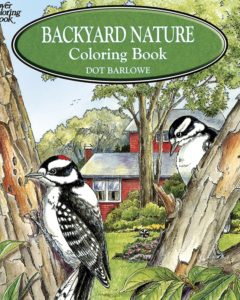 Color Your World with Natives
Color Your World with Natives
One of the guiding goals of the SCNPS is informing our communities about native plants. About the importance, yes, but also about which plants are ‘native’, meaning they co-evolved with the wildlife here, which are vital to supporting our wildlife in our habitat. Two great examples are published by Dover and available through our book partner The Complete Naturalist in Asheville, as well as Amazon. Coloring is a great educational pastime for children, and an opportunity to build awareness. The links to purchase are included below.


